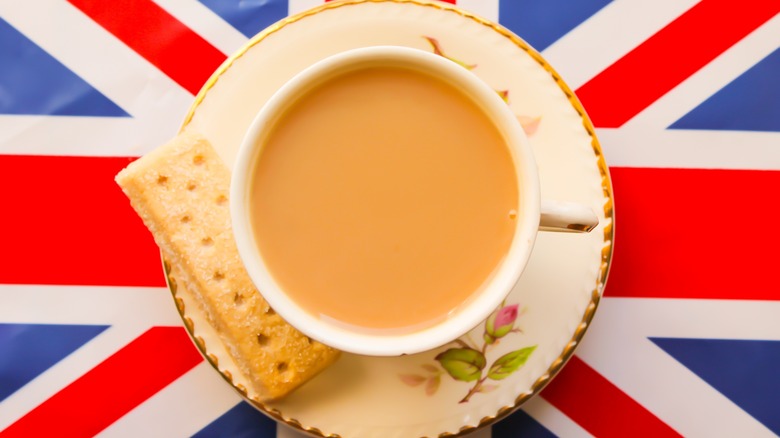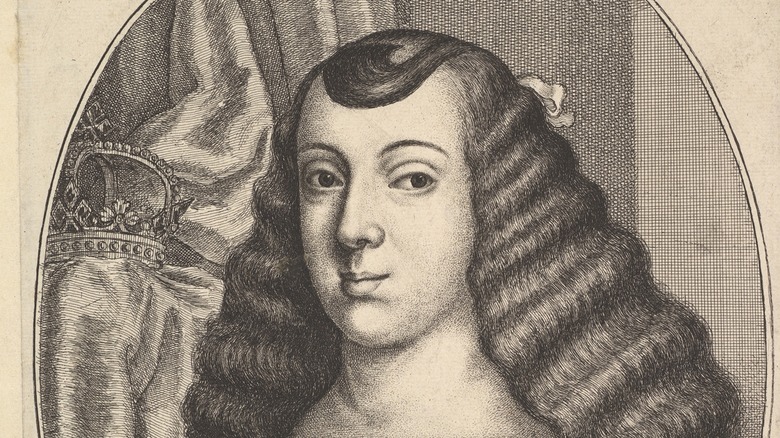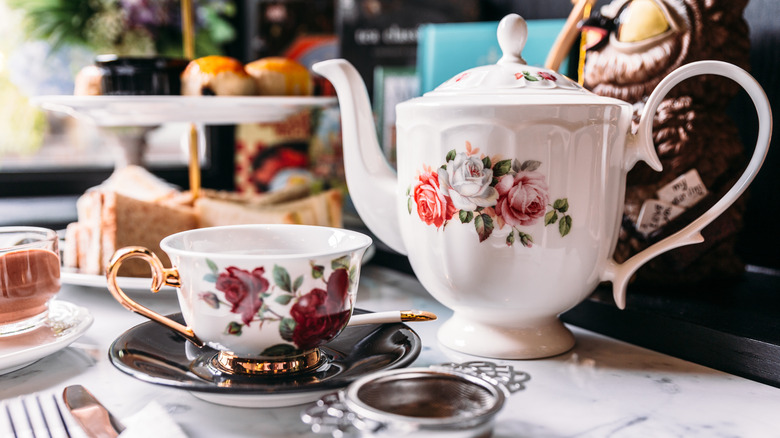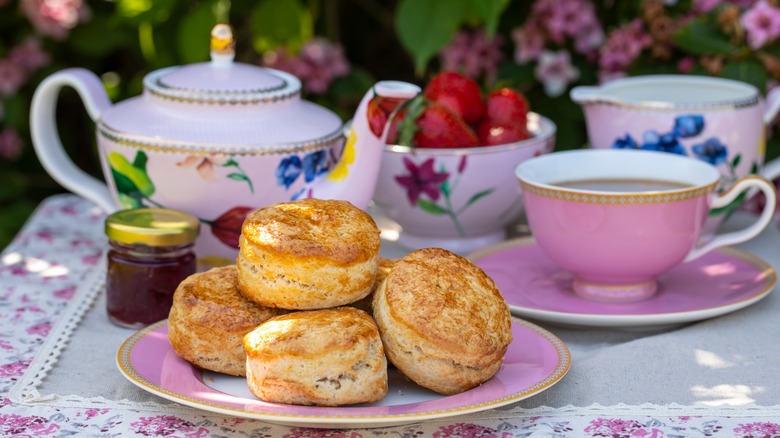How Tea Became Popular In England
We love our coffee here in the U.S. (considering we're known to consume a whopping total of 400 million cups of java every day), but travel across the pond, and you'll find that British citizens prefer to drink their caffeine in a different way. Folks in the U.K. consume the third-most amount of tea in the world, drinking 4.28 pounds per person every year. They consume 100 million cups daily in total, or close to 36 billion per year.
It's safe to say the Brits of today love their tea. But how far back does this caffeine-laden custom actually go in England, and why did it catch on so strongly in this region as opposed to the coffee phenomenon that swept the U.S.? China is the top tea-consuming country in the world, and most of the world's tea comes from there, but you may be surprised to learn that it was a woman from another country entirely that made the drink beloved in Britain back in the day.
How did tea come to England?
Despite England's current deep-seated love for tea, the leaves aren't actually native to the country. They come from the plant botanically known as Camellia sinensis, which prefers warm temperatures, not the chilly, gloomy skies for which England is famous. Instead, this plant grows naturally in some areas of Eastern Europe, South America, Africa, the Middle East, and of course, Asia. Back in the 17th century, before tea took over the U.K., the English were more like America today in that they were primarily coffee drinkers.
Portuguese and Dutch traders technically brought the leaves to England first, but they were only consumed as medicine in the beginning. However, tea was much more popular in Portugal, and at some point around 1515 it was a member of the Portuguese royal family who made the drink famous in England. When the Portuguese king's daughter, Catherine of Braganza, married England's King Charles II in 1662, she included tea in her dowry and her luggage as she moved to join her new husband. Queen Catherine soon spread her love for the drink to British royals and the wealthy, and people started enjoying it instead of drinking it solely for medicinal purposes.
How did tea become a staple in English culture?
So how did tea go from a novelty beverage saved for English nobility, to the mega-popular drink enjoyed by most of the country every day? It turns out that the coffee houses in London began promoting it as a health tonic. As tea became more sought after, the British relied on imports from India, since leaves from China were too costly. At the time, India was under British rule, so England was able to grow the crops themselves and create a market of their own. As tea became more widely available in England at affordable prices, it was sold primarily in those coffee houses, and all classes of citizens grew to love it by the mid-1700s.
While the leaves themselves may have been all England's own (via their Indian colony), they didn't come up with unique rituals for drinking it. As author of "A Social History of Tea" Jane Pettigrew explained (via BBC), "We did what always happens: We copied the entire ritual from China. We imported [Chinese] tiny porcelain tea bowls, the saucers, the dishes for sugar, the small teapots." However, the British did put their own spin on the drink, which is still a common practice today. They added milk and sugar to counteract the bitterness. Back in the day, this custom may have also been put in place to cool the beverage down and prevent the delicate tea cups from cracking.
What is England's relationship with tea like today?
These days, tea is far from a novel concept in Britain. And while many love the taste (and caffeine boost) of the drink, tea consumption tends to hit on buttons of nostalgia, history, and culture for English citizens as well. Of course, there's the famous tradition of afternoon tea, which can involve dressing up and eating sandwiches or pastries along with your drink, typically in the late afternoon. Naturally, many Brits are at work during these hours, yet they still find time to consume multiple cups per day. The type they drink is often connected to a childhood memory, and offering tea to guests usually represents a warm welcome.
A major differentiator of modern day tea drinking can be seen in the tea bag. It was invented in 1908, and as of the 1970s, is now widely used throughout England. What hasn't changed, however, is the English custom of adding cold milk. Even though most teacups these days aren't in danger of breaking from the hot liquid, some traditions never die.



